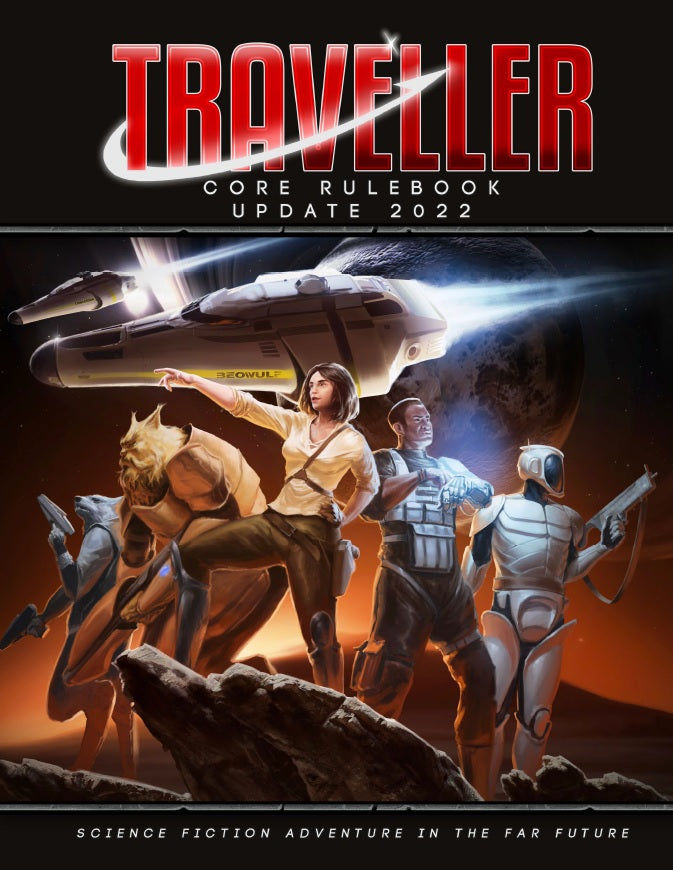Stars Without Number Science Fiction; Space Opera; Bleak; Old-School Renaissance (OSR); Exploration-Driven; Sandbox; Character Customization
Stars Without Number (SWN) is a science fiction tabletop roleplaying game designed for sandbox campaigns, emphasizing exploration and player agency. Its old-school renaissance (OSR) mechanics provide a blend of familiar D&D-style rules with unique elements that foster a gritty, unpredictable space opera experience. The game distinguishes itself with robust GM tools for sector and faction creation, enabling dynamic and emergent gameplay. Its target audience includes both OSR enthusiasts and those seeking a customizable, exploration-driven sci-fi setting.
Theme and Setting
Stars Without Number presents a bleak, post-apocalyptic space opera setting. Humanity has spread across the stars, only to be fractured by a cataclysmic event known as 'The Scream'. Worlds are isolated, technology varies wildly, and interstellar travel is difficult and dangerous. This fragmentation allows for diverse science fiction tropes to coexist, from cyberpunk megacities to frontier worlds reminiscent of Firefly. The core rulebook provides a framework, encouraging Game Masters to populate the setting with their own creations and adapt the existing lore to their preferences, with its default setting designed to be a tool, justifying any flavor of science fiction.
Core Mechanics and Rules
SWN uses an OSR-inspired ruleset, familiar to D&D players. Characters have attributes, skills, and levels. Skill checks are resolved using 2d6 + skill modifier against a target number, promoting a degree of player confidence. Combat, however, relies on a d20, mirroring D&D's mechanics and emphasizing the danger and unpredictability of conflict. Combat is notably deadly, especially for starting characters, encouraging tactical thinking and creative problem-solving. Character customization is achieved through three core classes: Warrior, Psychic, and Specialist, each offering flexibility via skills and 'Foci,' special abilities that allow for diverse character builds such as space marines, psionic assassins, or tech-savvy explorers. Starship combat abstracts range and position, focusing on crew roles and actions for dynamic and engaging encounters.
What Makes It Unique
SWN's uniqueness stems from its robust tools for Game Masters to create and manage sandbox campaigns. The Sector Creation system guides GMs through a step-by-step process of generating star systems, planets, and world tags, using random tables to spark creativity and ensure variety. Each world receives two tags, acting as themes that come with NPC's and plot hooks to make adventures and complicate player lives. The Faction System is another defining feature, a mini-game where the GM controls various factions within the sector, each with stats and assets. These factions interact and compete, creating a dynamic, living world independent of the player characters' actions, resulting in emergent storylines and unexpected consequences. This approach provides a rich and unpredictable game world where player choices truly matter.
Target Audience and Player Experience
SWN appeals to players who enjoy exploration, sandbox gameplay, and old-school sensibilities. It's a great fit for those who want a high degree of player agency and a world that reacts to their choices. The game encourages creative problem-solving and tactical thinking, as combat can be lethal. The extensive GM tools also make it attractive to GMs who want support in creating a dynamic and engaging setting without excessive pre-planning. While the setting itself is relatively generic, this allows both GMs and players to imprint their own creative vision onto the game, tailoring it to their preferred science fiction subgenres. The availability of a complete, free PDF version makes it accessible to a wide audience, allowing potential players to try before committing to the deluxe edition.


